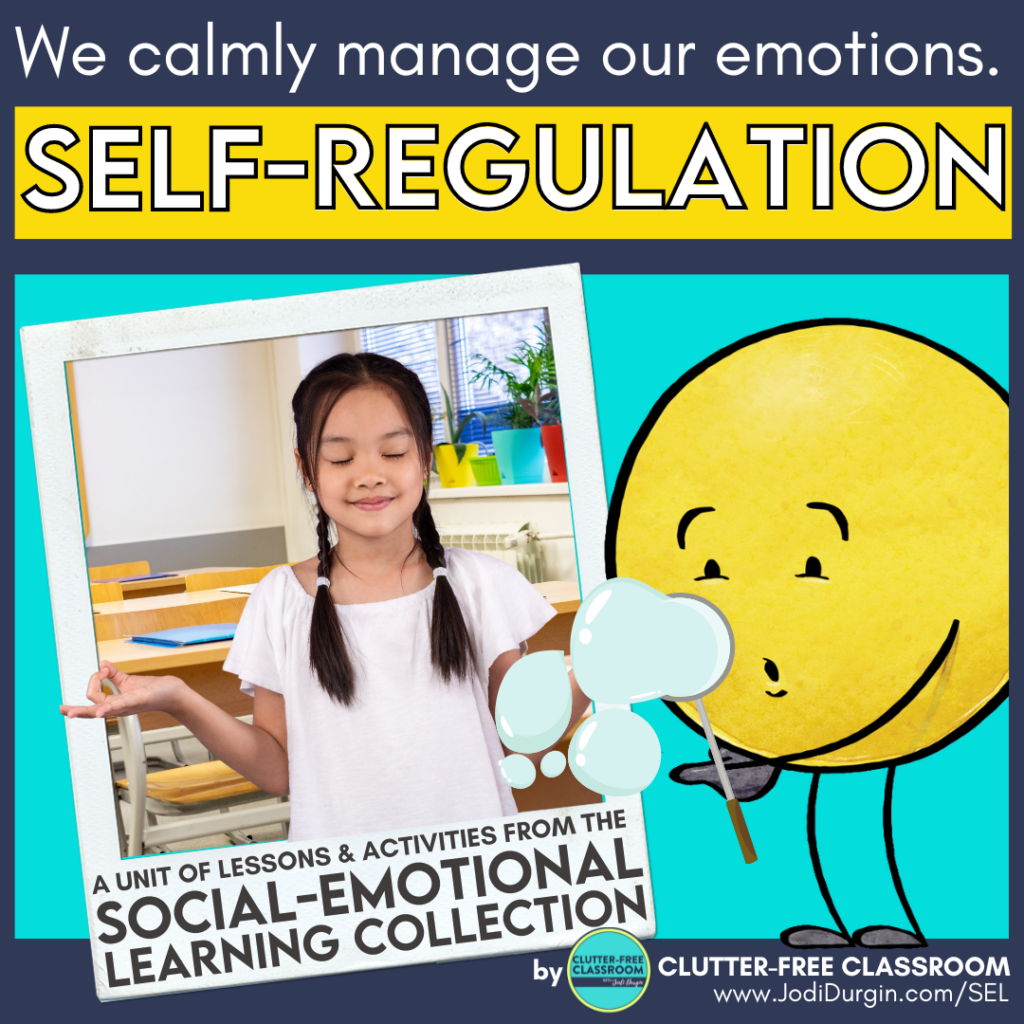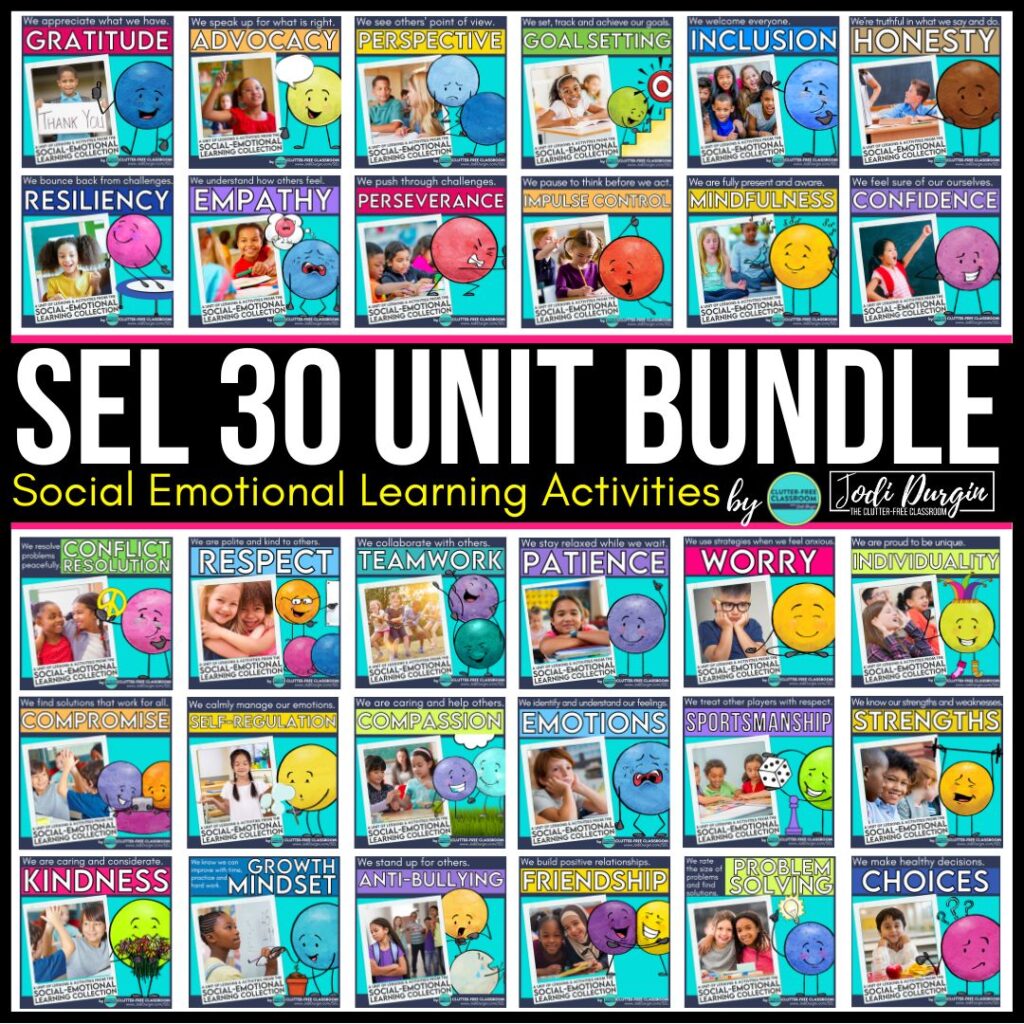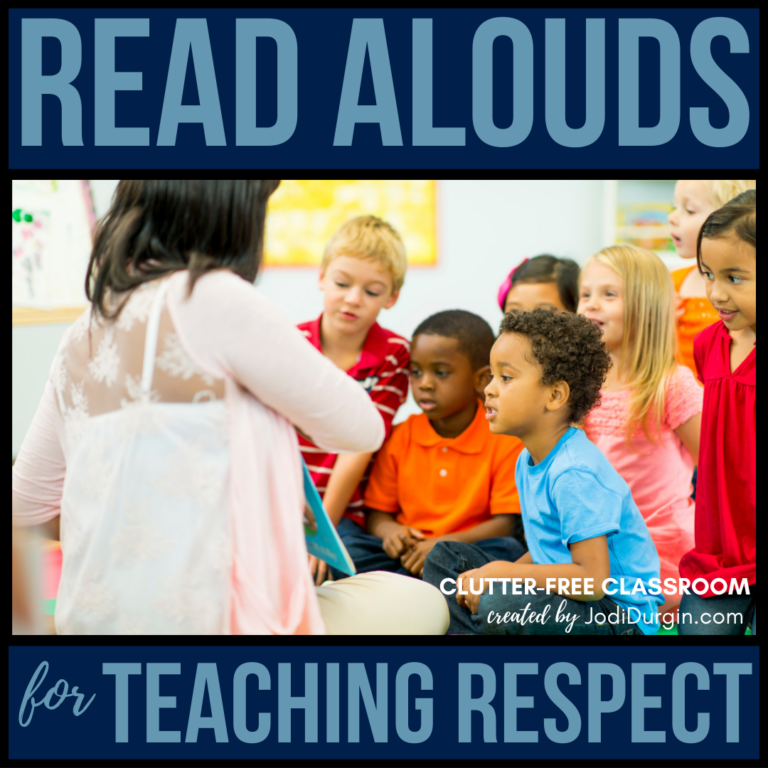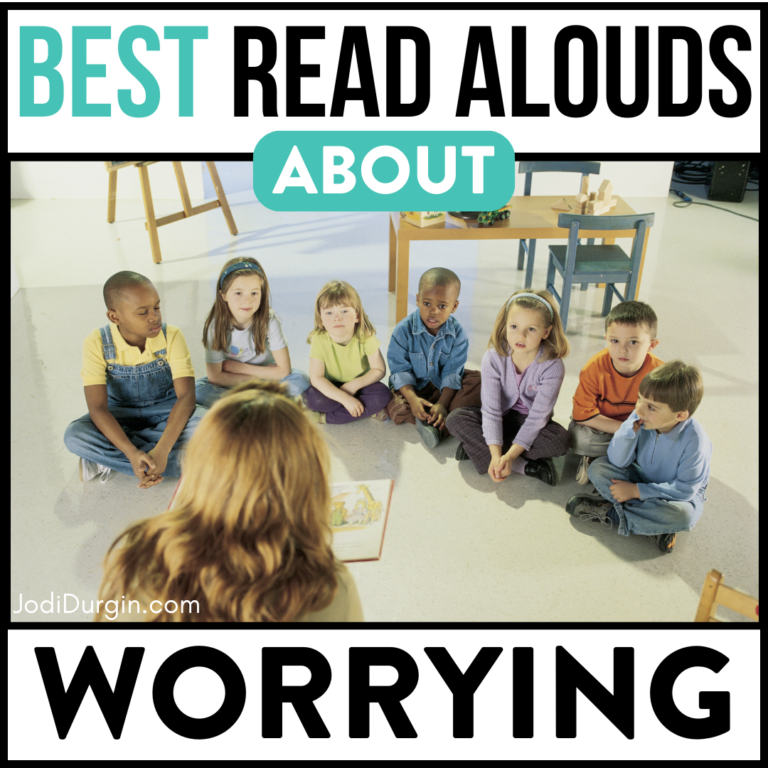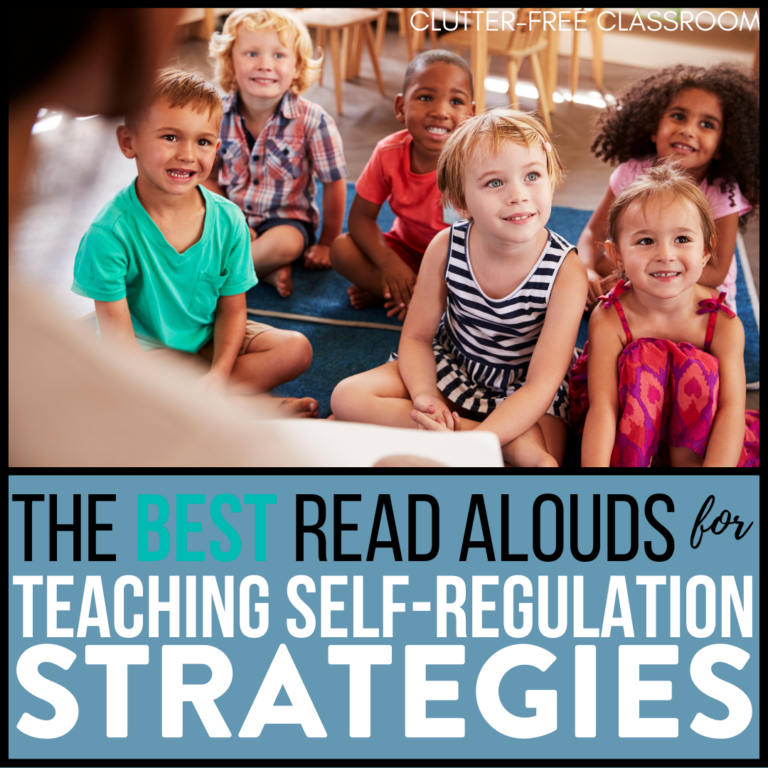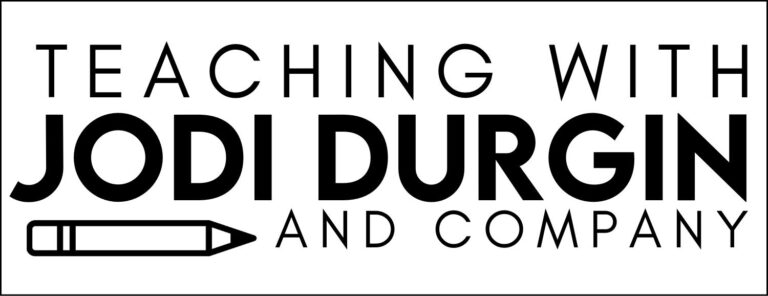If you are an elementary teacher looking to learn how to help your students self-regulate then you found the right place! Self-regulation skills prepare kids to face dilemmas and solve problems while staying in control of themselves. Students who are able to self-regulate are more independent than students who cannot. In this post, we’ll go into detail about what self-regulation is and why it’s important. In addition, we’ll share tips and ideas for how to teach self-regulation skills in an elementary classroom setting. Read all about helping students self-regulate in and out of the classroom below!
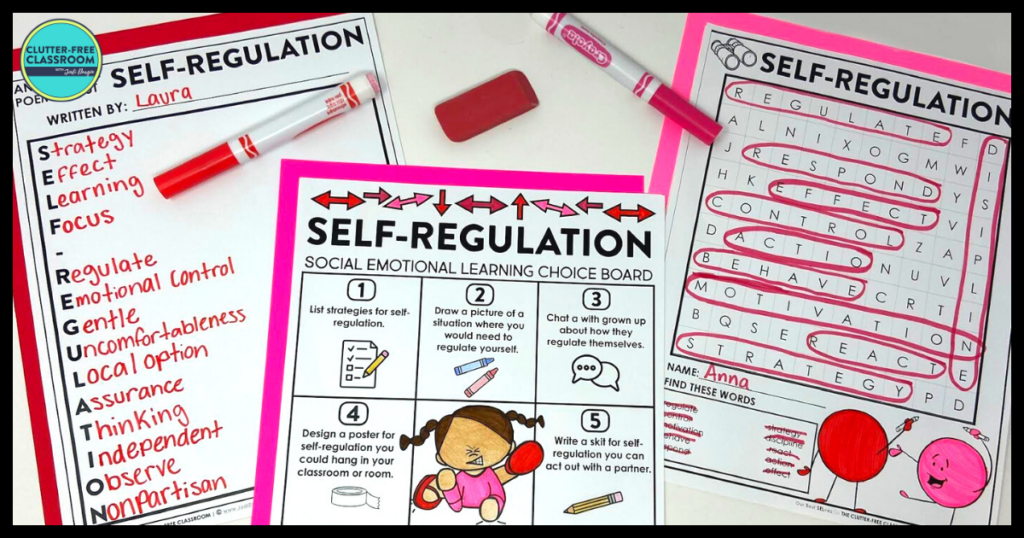
What Does Self-Regulation Mean?
Self-regulation is the ability of a person to control their behaviors, emotions, and actions in different situations. In the classroom it can look like students deep breathing, monitoring their behavior or taking breaks.
Why is it Important for Kids to Self Regulate?
It is important for kids to self-regulate because it gives students the ability to say no to actions and behaviors that are not appropriate. It also allows them to respond to situations and emotions in productive ways.
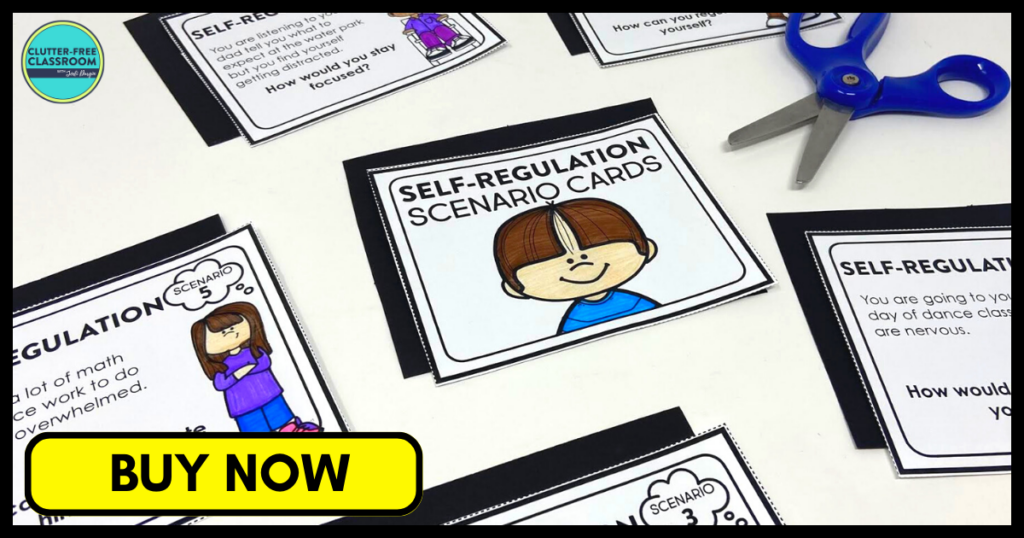
How Do I Know If I Need to Teach Self-regulation in My Classroom?
The students in your 1st, 2nd, 3rd, 4th or 5th grade classroom would benefit from self-regulation lessons and activities if any of these statements are true:
- Student behavior has gotten worse.
- Students struggle to stay focused throughout the day.
- Your students have strong behavioral outbursts.
- Students rely on you to help them without first trying themselves.
- Students are frequently interrupting you.
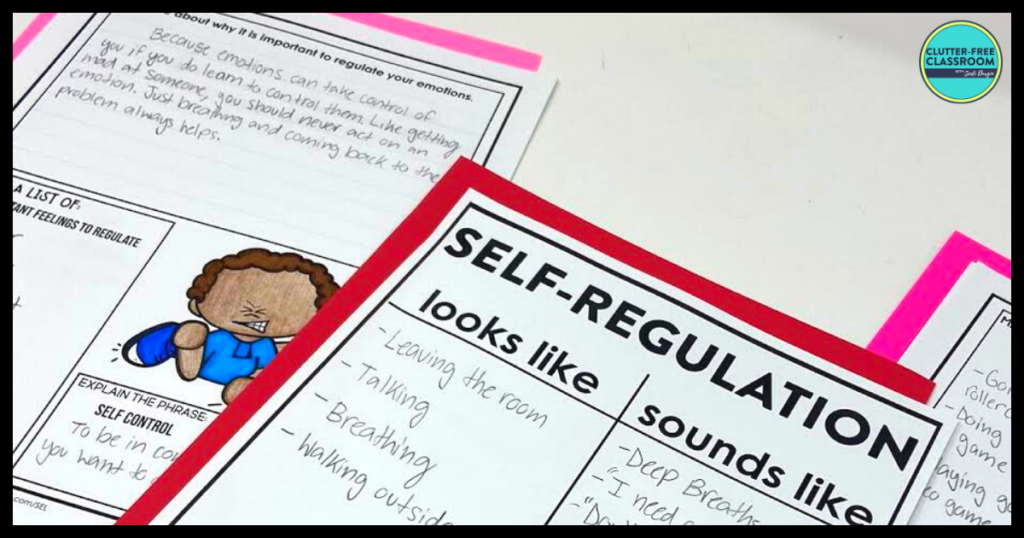
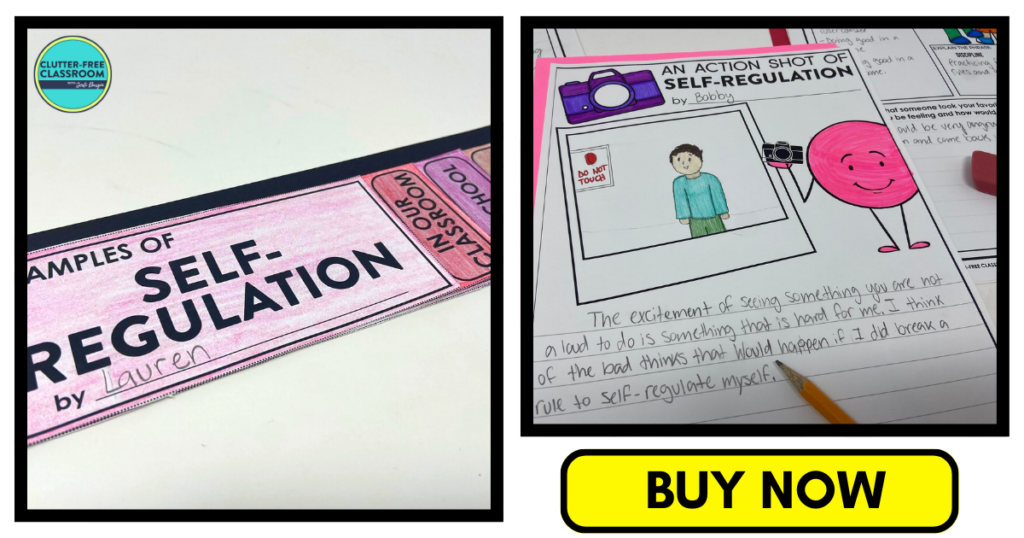
4 Reasons To Promote Self-Regulation In Your Elementary Classroom
Below are 4 reasons to promote self-regulation in your elementary classroom.
1. It gives students the ability to sit and listen in a classroom
Self-regulation prepares students to sit and listen in the classroom. Some students will be able to come into school each day and sit on the rug and listen, but a good majority of kids will need instruction in self-regulation skills to make this happen. Self-regulation will help students stay focused and avoid distractions.
2. It gives students the ability to interact with peers
Self-regulation helps students positively interact with peers and form strong friendships. They will avoid behaviors like yelling and screaming or being physical. They will use strategies to regulate when they feel like they are going to do those behaviors.
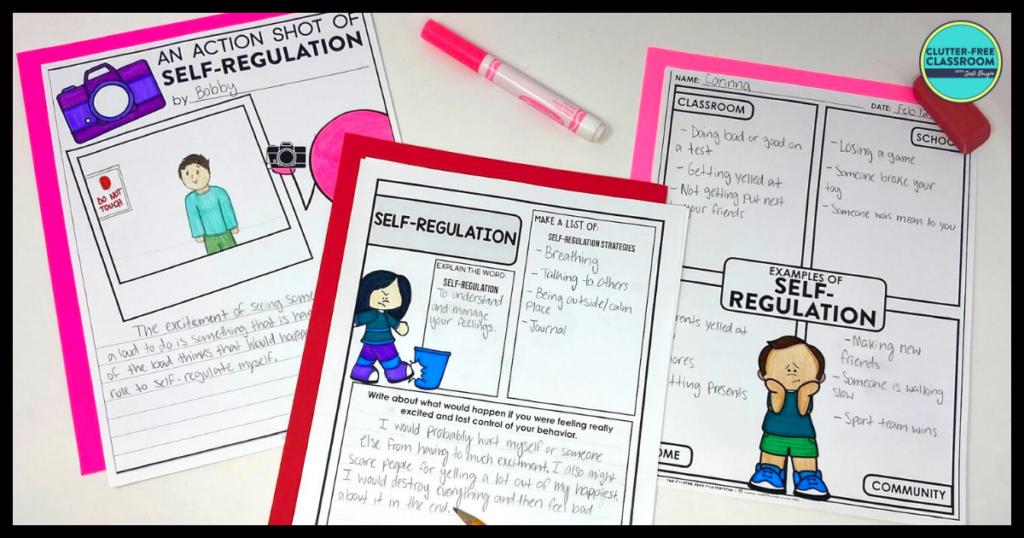
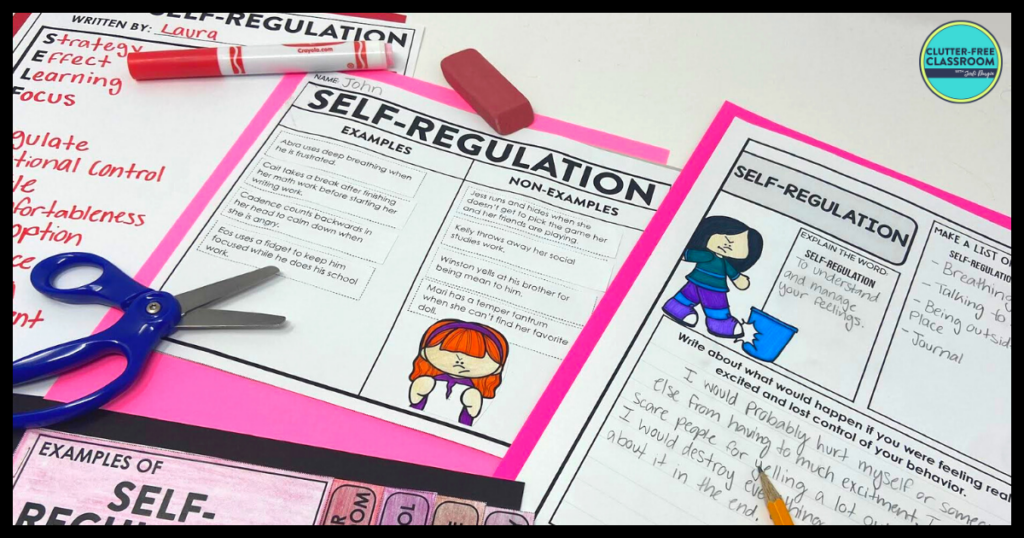
3. Self-regulation helps with impulse control
Promoting self-regulation will help students with impulse control. Self-regulation is a necessary step before students will be able to control their impulses. It teaches them to identify their emotions and the behavior that they have in response to their emotions.
4. Self-regulation helps students be more independent
Students who can self-regulate are much more independent than students who cannot. They will look towards themselves to identify their feelings and impulses, and choose a strategy for managing their emotions. Students self-regulating is much more effective and beneficial for students and staff than the teacher trying to regulate all of the students.

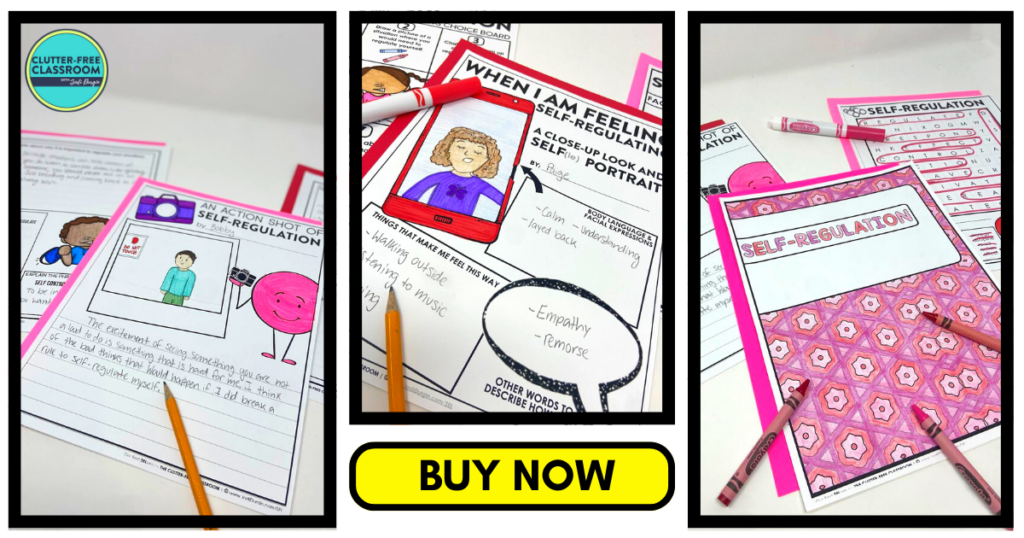
5 Tips and Ideas for Teaching Self-Regulation
Below are tips and ideas for teaching self-regulation to elementary students.
1. Read Aloud Picture Books about Self-Regulation
Picture books are a great way to introduce and teach an SEL topic. It gets students thinking about the topic and activating their background knowledge. Check out this list of picture books for teaching self-regulation!
2. Watch Videos about Self-Regulation
There are tons of free online videos out there that promote social emotional learning. It’s a fun and engaging way to teach SEL skills that your students will enjoy. Check out these videos for teaching self-regulation!
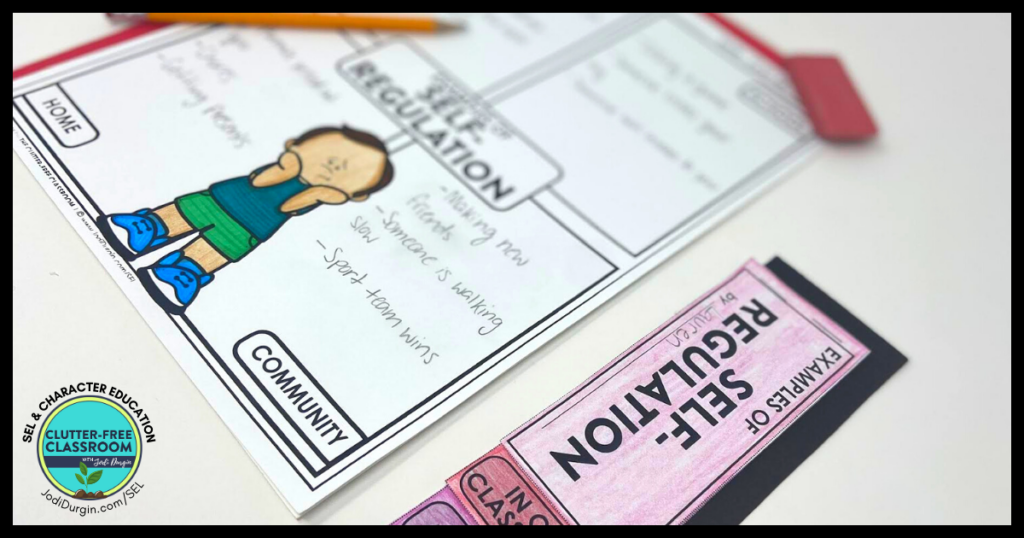
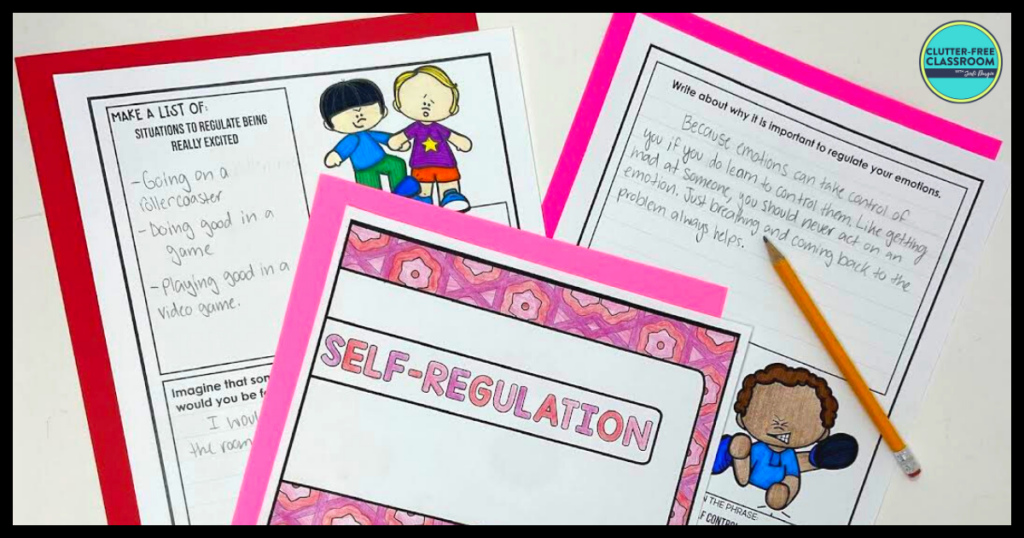
3. Explicitly Teach Vocabulary Related to Self-Regulation
Vocabulary words can help students develop understanding of self-regulation and create connections through related words. Our self-regulation SEL unit includes ten vocabulary cards with words related to the SEL topic. It is important for students to be able to see, hear, and use relevant vocabulary while learning. One idea for how to use them is to create an SEL word wall as students learn the words.
4. Provide Practice Opportunities
When learning any skill, students need time to practice. Social emotional learning skills are no different! Our self-regulation SEL unit includes scenario cards, discussion cards, choice boards, games, and much more. These provide students with opportunities to practice the skills independently, with partners or small groups, or as a whole class.
5. Integrate Other Content Areas
Integrating other content areas with this topic is a great way to approach this SEL topic. Our self-regulation SEL unit includes reading, writing, and art activities.
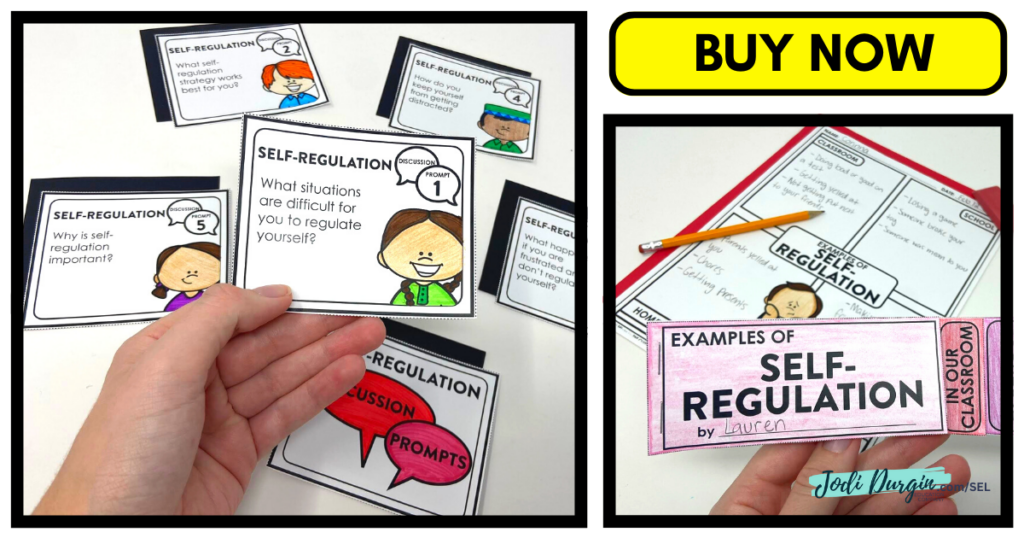
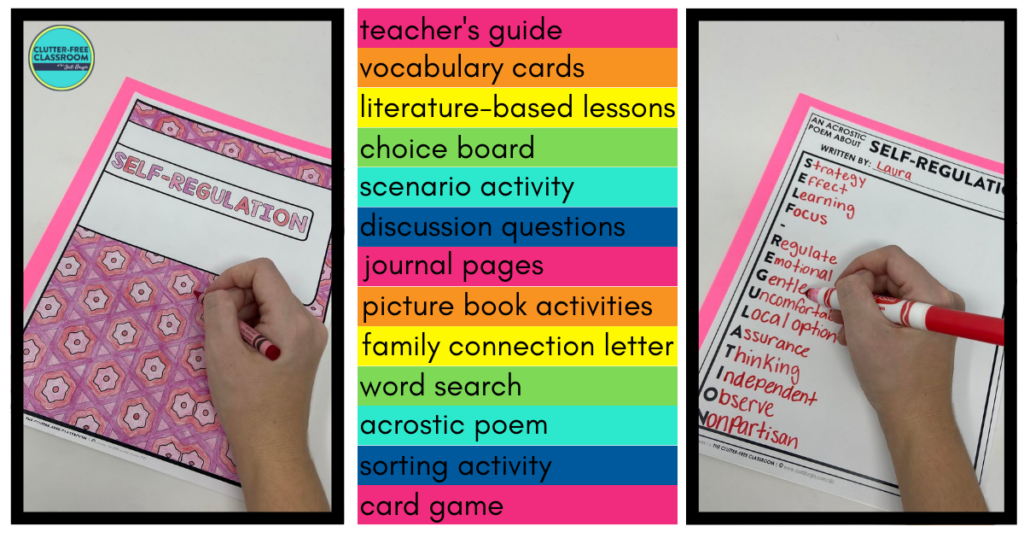
Skills Related to Self-Regulation
Self-regulation, in the context of social emotional learning (SEL) or character education, refers to the ability to manage and regulate one’s thoughts, emotions, and behaviors in order to achieve personal goals and maintain well-being. While “self-regulation” is the commonly used term, there are other words and phrases that can convey a similar meaning. These alternative words highlight different aspects of self-control, self-management, and emotional regulation. Here are some other words used in the context of self-regulation:
- Self-control: Exercising restraint and discipline over one’s impulses, emotions, and behaviors.
- Self-management: Taking responsibility for one’s thoughts, emotions, and actions to achieve desired outcomes.
- Self-discipline: Practicing willpower and control in order to stay focused, motivated, and on track.
- Emotional regulation: Managing and modulating one’s emotions in a healthy and adaptive manner.
- Impulse control: Resisting immediate impulses and urges in favor of long-term goals or desired outcomes.
- Emotional self-regulation: Understanding and managing one’s emotions to maintain emotional balance and well-being.
- Executive function: Utilizing cognitive processes such as planning, organizing, and self-monitoring to regulate behavior and achieve goals.
- Self-modulation: Adjusting one’s own responses, behaviors, or arousal levels to achieve optimal functioning.
- Self-guidance: Directing and guiding one’s own thoughts, actions, and emotions in alignment with personal values and goals.
- Self-adjustment: Making necessary adaptations and modifications to one’s thoughts, behaviors, or strategies to optimize performance or well-being.
These terms encompass the concept of self-regulation and reflect the qualities of self-control, emotional regulation, and adaptive behavior within the context of social emotional learning (SEL) or character education.
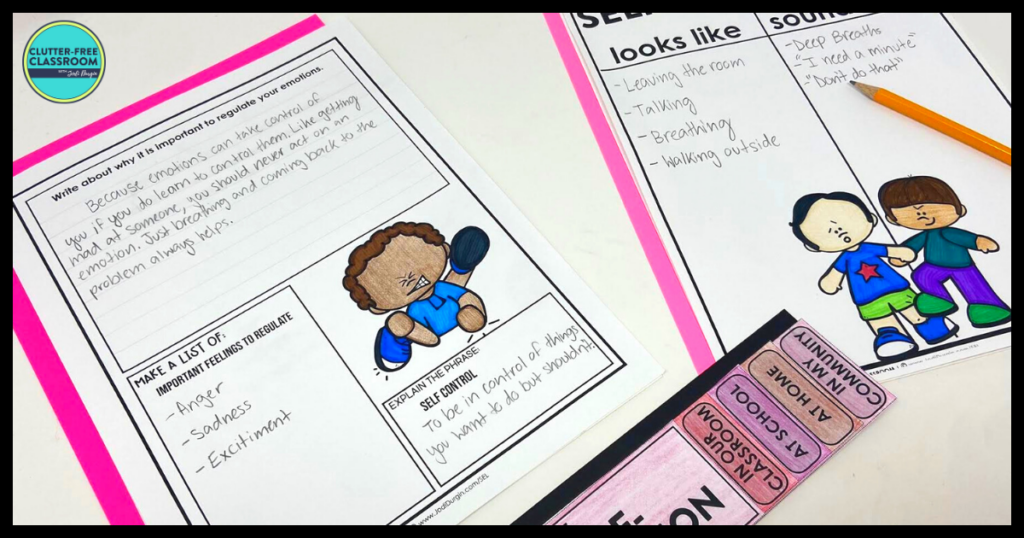
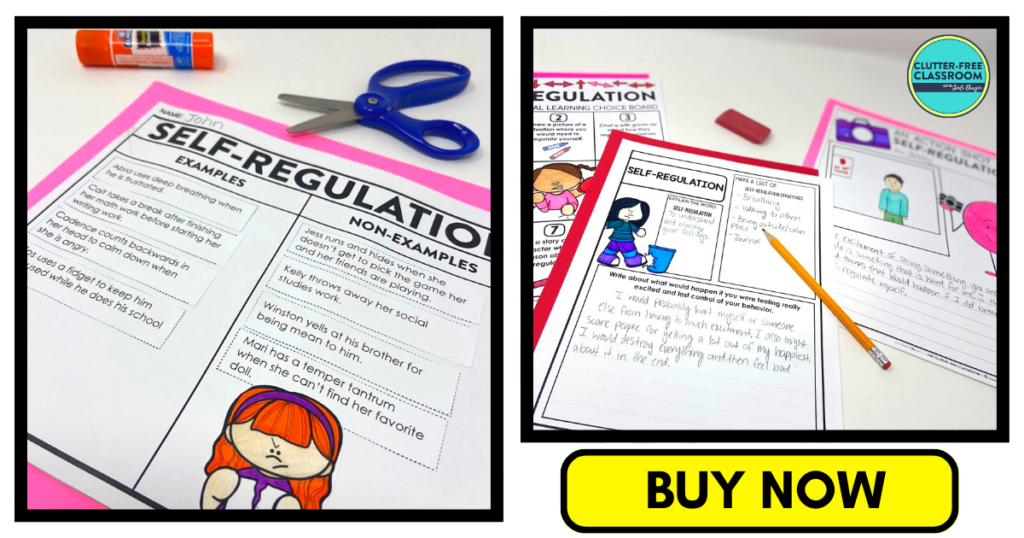
Download the SEL Activities
Click an image below to either get this individual self-regulation unit or get ALL 30 SEL units!
In closing, we hope you found this information about teaching self-regulation helpful! If you did, then you may also be interested in these posts.

